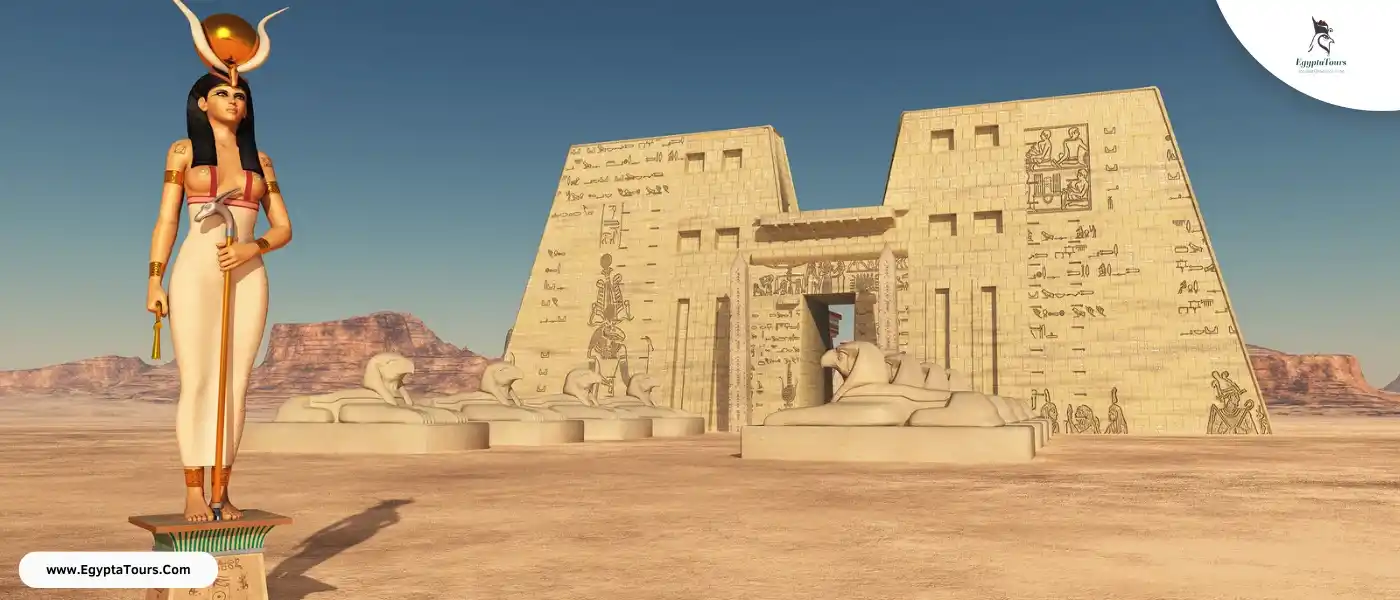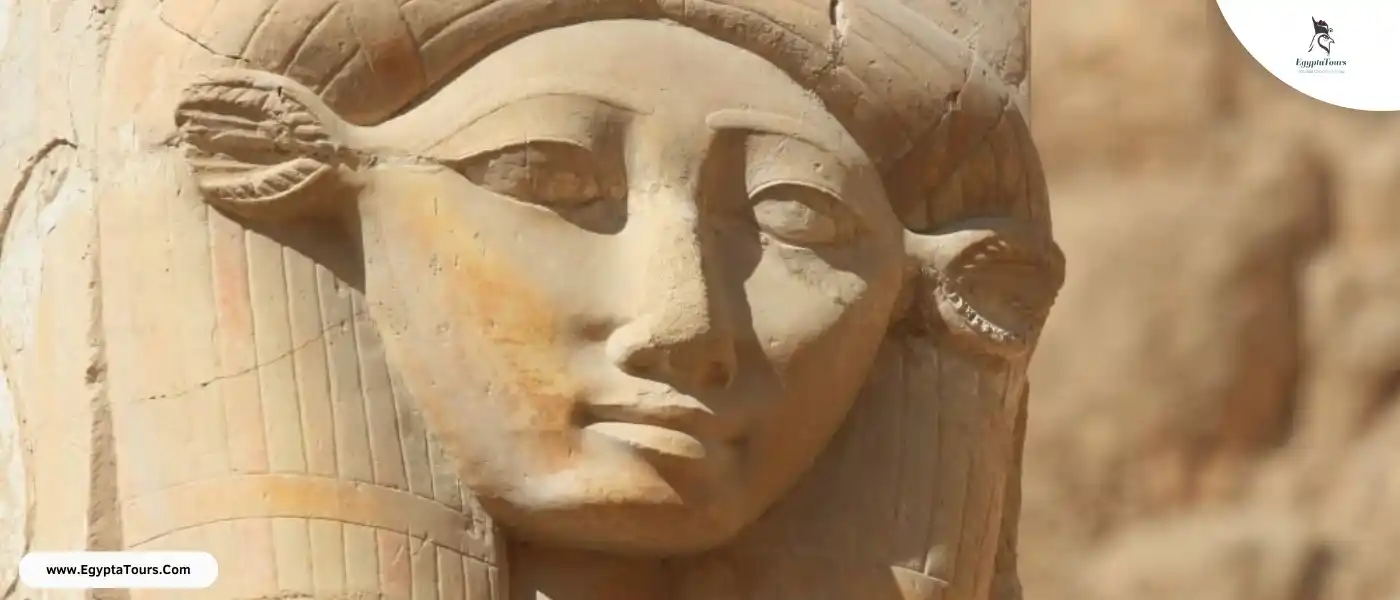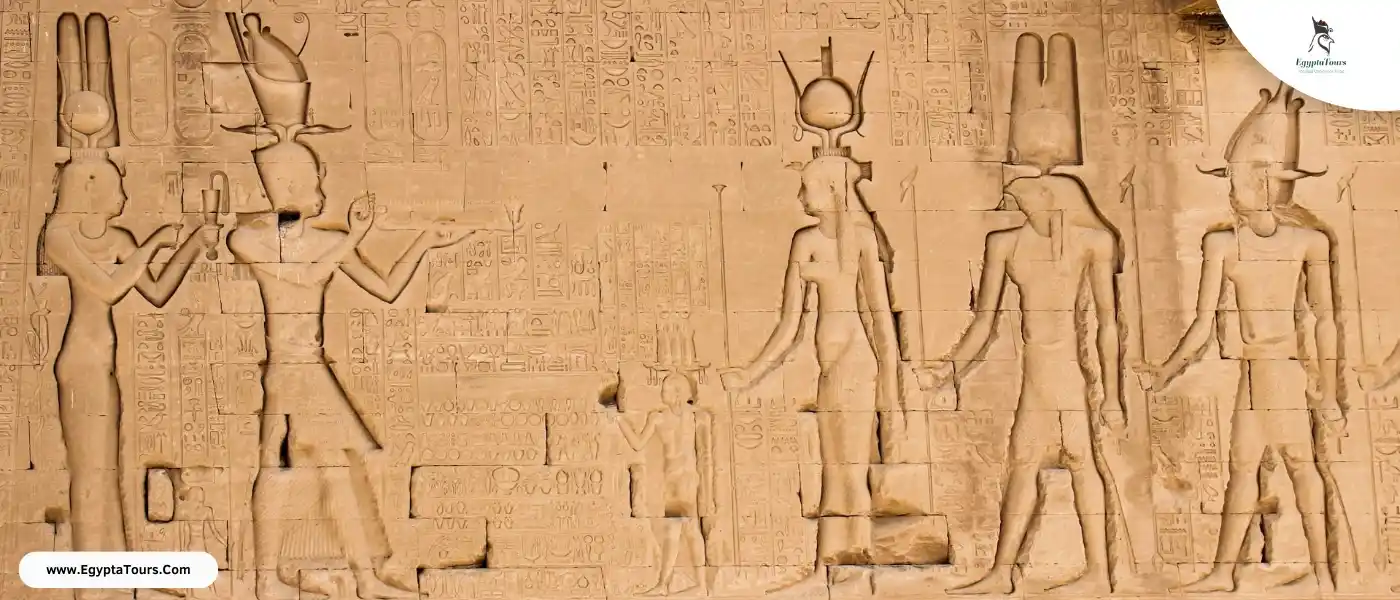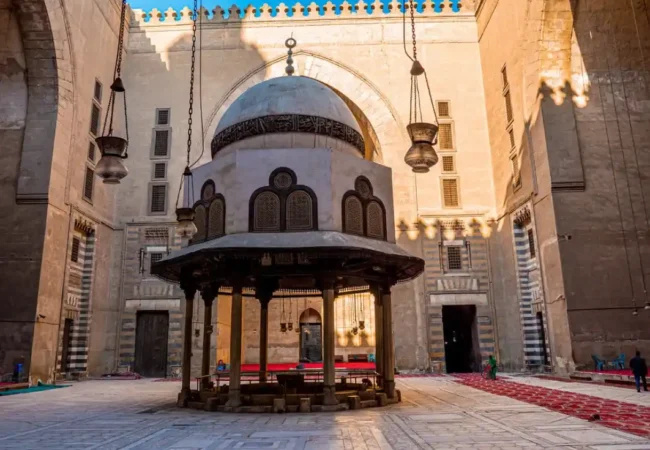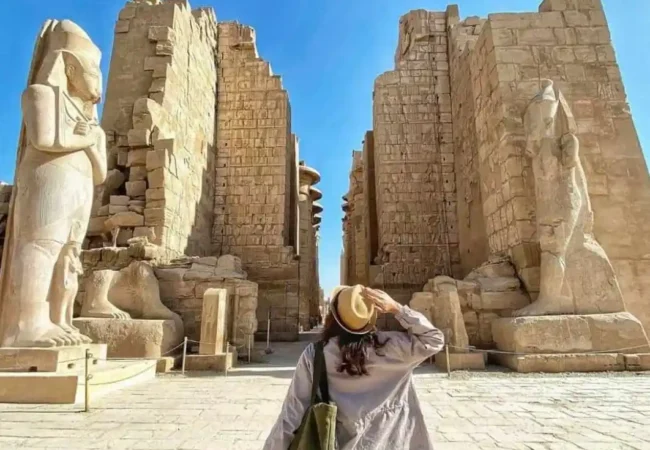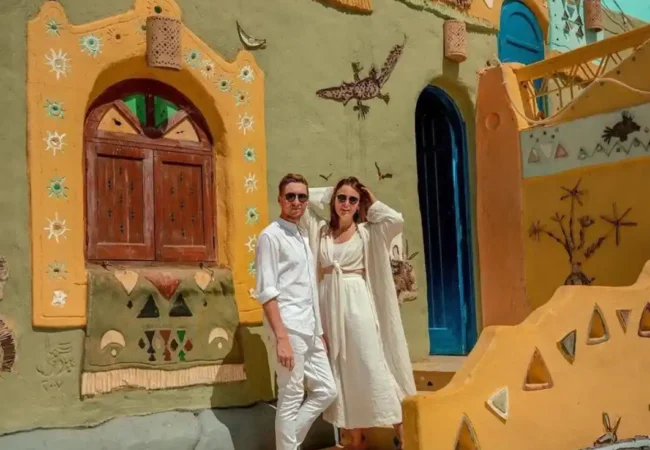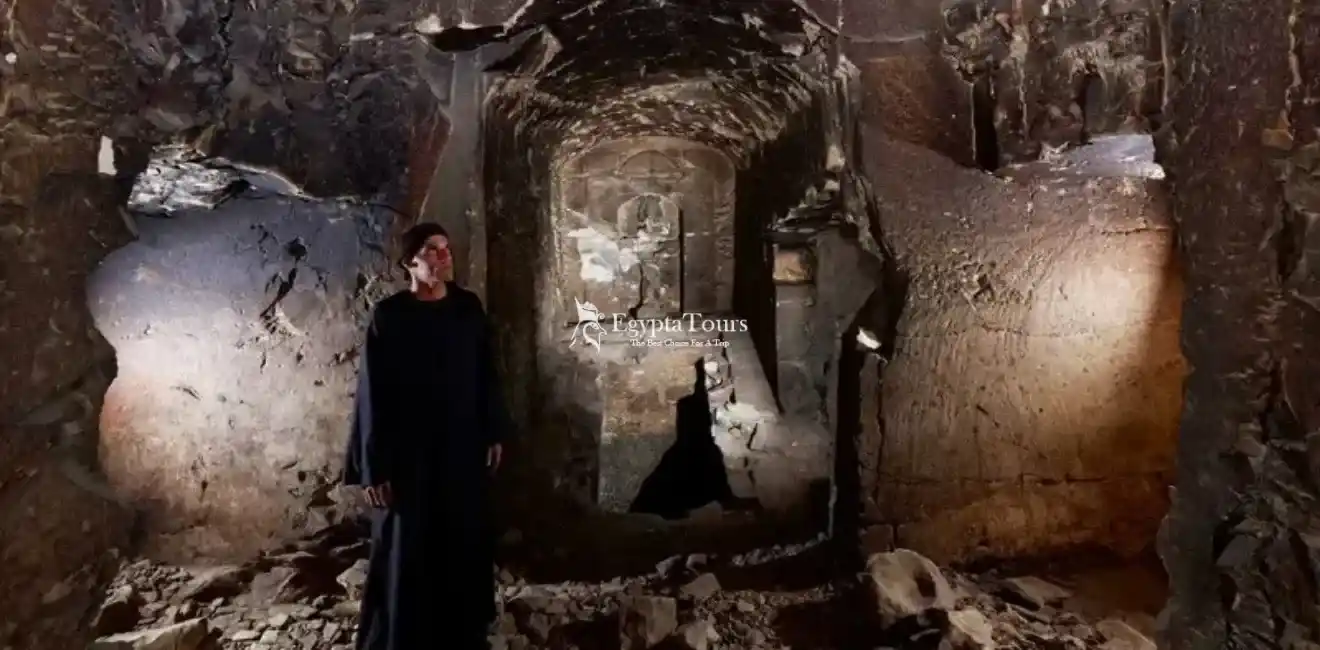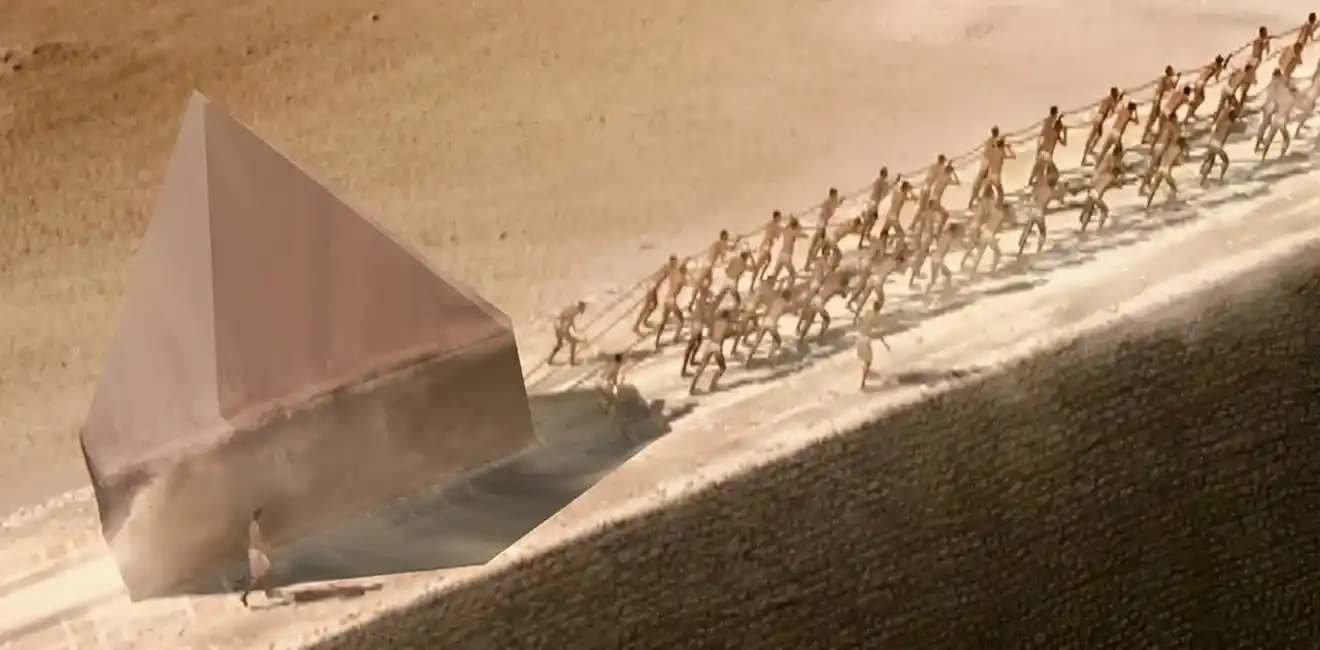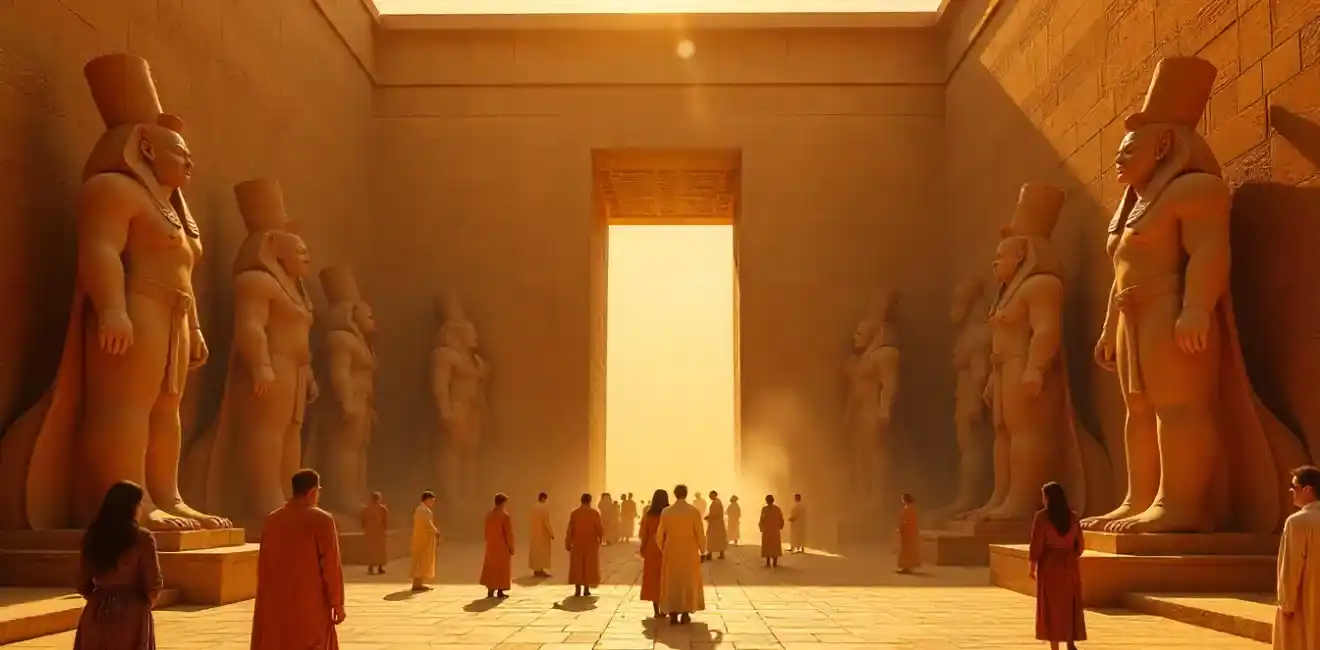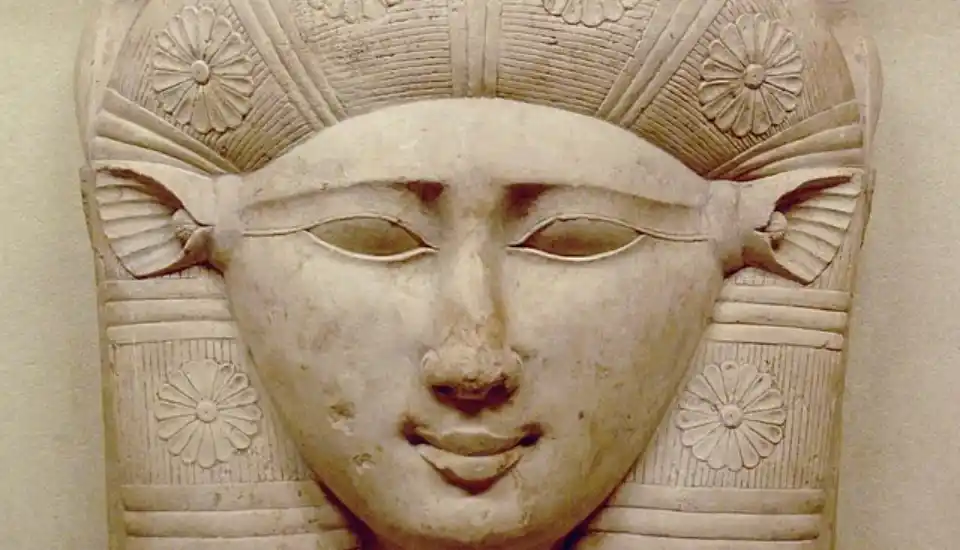
Hathor
Hathor, an important Egyptian goddess, was worshipped from the Early Dynastic period as the goddess of joy, love, and music. She was often depicted as a woman wearing a headdress with cow horns and a sun disk. Revered as the wife of Horus and the mother of the pharaoh, her main cult center was at Dendera, where grand temples honored her divine role in protecting kingship and spreading happiness.
Religious myths and beliefs proliferate in the ancient Egyptian civilization, such as the multitude of revered deities like the god Ra, Osiris, Horus and the goddess Hathor.
Hathor is considered one of the main cults that originated at the beginning of the dynastic period in ancient Egyptian civilization.
Her distinctive form comes either as a celestial cow or as a woman who has horns above her head.
In this article, we will talk about the goddess Hathor in the beliefs of ancient Egypt and learn about her characteristics, some facts about her.
Hathor is the goddess of love, the sky, the mother, fertility and everything that signifies beauty, and she was previously named Bat.
She primarily symbolizes all the traits of the Egyptian lady as a mother, wife, daughter and sister.
She is considered the goddess who particularly protects singers and dancers and everything that spreads joy and delight in the universe.
Her worship was strongly concentrated between the city of Ashmunein which is near Fayoum and the sacred city of Abydos in Sohag.
Later, the worship spread until it reached the Greeks, Phoenicians, Romans and Mesopotamia.
She was discovered initially on the historical Narmer Palette.
Origins of Hathor
She was named Hathor which means ‘House of Horus’ or ‘Sanctuary of Horus’ or ‘Lap of Mother Horus,’ because in some myths, she is considered the safe haven that embraced the orphan Horus, son of Isis.
According to the accounts, she nursed and raised him.
She was an important goddess worshipped by the ancient Egyptians with veneration around the third millennium BC.
Some amulets dating back to her were discovered during excavations at Tel Sath Vincienti in Spain and it has been confirmed that they were indeed made in Egypt.
Also, clear images of the goddess Hathor were found in some amulets discovered there and this discovery indicated the existence of some form of trade and cultural exchange between the two countries.
Facts about Hathor
There are several diverse and unique facts about the goddess Hathor.
She was embodied in the form of a cow that some worshipped. She strongly symbolizes motherhood, fertility, giving and the bounty that the earth produces.
She also often appears as an elegant woman who has horns with the sun disk between them and her human image suggests beauty, fun and delight.
Hathor’s main temple is in Dendera and it is considered one of the most beautiful and famous ancient Egyptian temples that are exceptionally well-preserved.
She played an important and vital role in beliefs about the afterlife, as she received the deceased arriving in the west and offered them food and drink.
It was also believed that her spirit lingered in the sacred trees that adorned the tombs. She is among the goddesses who enjoyed great worship which extended beyond Egypt for thousands of years.
Characteristics of Hathor
Hathor is characterized by some diverse properties. She was a patron and protector of some foreign desert lands from which precious metals were extracted, such as the turquoise mines in Sinai and at Deir el-Bahri, therefore the Egyptians nicknamed her the “Lady of Turquoise”.
She is also distinguished by always being depicted as a beautiful and captivating woman.
She was also known as the strong protector, as she protected the tombs of the dead and provided them with spiritual help.
She was also characterized as the mistress and goddess of quarries, because she was associated with the source of the ancient Egyptian desert for the existence of stones and the building of tombs.
Her characteristics sometimes include that she might appear bloodthirsty. She was considered the daughter and companion of the sun god “Ra,” defending and protecting him against the evil serpent god.
Hathor in Egyptian mythology
Hathor holds an important and pivotal position in some major Egyptian myths.
This is because she may appear in some important stories and events.
In many texts, she is considered the daughter of the god Ra, who is the supreme sun god.
She also embodies the Eye of Ra which fights his enemies fiercely, as she was mentioned with this attribute in the myth of the destruction of mankind. In another famous myth, she appeared in a positive role in treating and healing the precious eye of the god Horus after his battle with Set.
According to the myth, she used sacred gazelle milk to restore his sight.
She also sometimes has a strong relationship with the god Thoth, the god of wisdom and knowledge.
She also appeared in an important assistant role in the famous myth of Isis and Osiris, where she helped Isis in her search for her husband and his return to life.
Why was Hathor depicted as a cow?
Hathor was repeatedly embodied in the form of a sacred celestial cow and this depiction pointed to some religious and symbolic concepts as they believed in ancient Egypt.
The cow strongly symbolized motherhood and care for its abundant production of nourishing milk which was considered an essential source of life and food.
These essential qualities led Hathor to be called the goddess of love, goodness, prosperity and motherhood.
The curved cow horns indicated power and protection and this appears when she protected and defended other important gods like Ra.
The radiant sun disk between the horns directly symbolized the god Ra, her heavenly father, whose favorite daughter she was considered, deriving her power from him.
In addition, the cow was considered in Egyptian culture to be a loyal, giving and useful animal and this highlights the positive and beloved aspect of Hathor as a popular goddess of love and beauty.
Did Horus marry Hathor?
As is the case in many myths, the relationships between the gods in Egyptian mythology could be complex and variable, with several different local beliefs and traditions.
They differed about their genealogies and family relationships from one region to another within Egypt.
In some early myths, it might be said that Hathor acted as a mother or substitute nursemaid for the god Horus, specifically during his childhood phase when she protected him from the danger of Set.
In some other Egyptian myths, especially later ones, it appears clearly that Horus and Hathor were indeed sacred spouses who had a special status.
This marital bond is certainly evident in the inscriptions of the temple dedicated to them in the city of Edfu.
The priests and the people celebrated every year in this temple an important religious festival called the “Festival of the Beautiful Reunion” or “Festival of the Sacred Marriage,” commemorating their union.
Here, Hathor would set off in a procession to visit Horus, her husband, in his temple in Edfu from her main temple in Dendera on a river journey.
Why was Hathor called the lady of the west?
Hathor was nicknamed the “Lady of the West,” a funerary title of great importance in ancient Egyptian belief because it was believed that she stood symbolically at the side of the western mountain where the sun sets and tombs are located.
She granted the opportunity and permission for the passage of the sun on its nightly journey and for the dead on their journey towards eternity to go safely and peacefully to the underworld which is the realm of Osiris.
She was closely and directly associated with the afterlife and the fate of souls in ancient Egyptian beliefs.
The west in Egyptian thought was the region where the sun set each day, where it was believed to be the gateway to the afterlife, the world of the dead and eternity.
She was sometimes depicted standing on the western hills to welcome the deceased, providing them with necessary food and drink. She was considered their protector so they could obtain her protection and defense in the afterlife.
How was the worship of Hathor reflected in temples?
The widespread popular worship of Hathor was manifested in the construction of lavish temples that highlight her multiple images and roles, as she is the goddess of love, beauty, the sky, motherhood and music.
This appears astonishingly in architectural and artistic form in the temple of Dendera which is located there, possessing an attractive and innovative design.
Its famous columns with unique Hathoric capitals appear large and bear a capital that is carved with skill in the shape of the head of the goddess Hathor with her distinctive face.
The wall paintings and inscriptions on the temple walls showed some of Hathor’s religious festivals, such as the music and dance festival that was held for her, or scenes of her assisting the dead in the afterlife.
Small shrines belonging to her were also discovered in some other major temples.
You can also see her artistic and architectural influence in the decoration of columns and walls with drawings that highlight her cow-like face.
Some important drawings appear for her in the temple of Horus at Edfu, her husband in some traditions.
Gods and deities are numerous in the rich ancient Egyptian civilization which prominently included the goddess Hathor who had widespread popularity.
She was symbolized by the celestial cow or depicted as a beautiful and elegant woman who carried horns above her head with the sun disk between them.
This composite image indicates beauty, motherhood and power. She was rightly given the title goddess of the sky, in addition to many other titles.
FAQs
Is Hathor good or evil?
In reality, Hathor was an embodiment of duality and complexity, strikingly combining good and evil.
On the good side, she was like a gentle and nurturing mother who cared for Horus, son of Isis and she provided help and comfort to the dead in their tombs.
On the side of evil and anger, she appeared terrifyingly in the myth of the destruction of mankind when she was an instrument of punishment, protecting the god Ra in his battles and destroying his enemies.
Did Horus and Hathor have a child?
No, it is not mentioned in the known myths that they had a child. They were ultimately gods worshipped and revered by the ancient Egyptians, not biological human beings who reproduce.
What happens when Hathor takes off her bracelet?
If Hathor removed her sacred bracelet, this indicated in some mythological traditions her immediate transformation from the form of a beautiful woman characterized by love and giving to the other, more powerful and fierce aspect which is “the lioness goddess Sekhmet.”
How powerful was Hathor?
She was considered a goddess of immense power.
She fiercely defended her father, the god Ra, when he wrestled with the evil serpent Apophis and she also protected and defended her adopted son, the god Horus, when he wrestled with his powerful uncle, the god Set.







